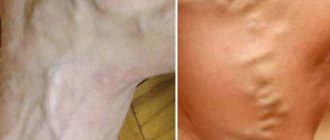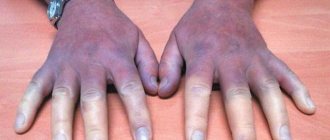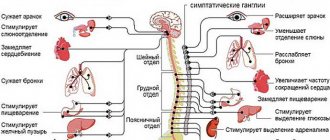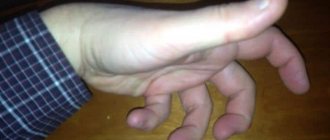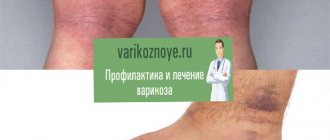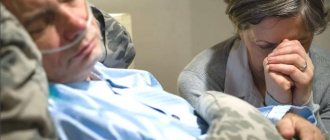In a normal healthy state, muscle tissue should be elastic and smooth, in accordance with the conditions and desires of a person - equally relaxed or equally tense. In reality, zones appear in the body in which tension (spasm) persists regardless of will. Such areas become especially obvious with age. These zones can be small or large. They may bother a person or not manifest themselves at all. At the same time, in some areas, tension can be eliminated by an effort of will, while in others this message may not be enough. Next, let’s find out what muscle spasms are. The causes and therapeutic measures will also be described in the article.
Classification
Muscle spasms, the causes of which will be indicated below, can manifest themselves in striated (skeletal) or smooth tissue. In the first case, convulsions accompany, for example, paralysis. With angina pectoris, the muscles of the vascular walls spasm; with bronchial asthma, the bronchi, respectively, spasm. Tension can occur in the esophagus, intestines and other organs. Muscle spasm of skeletal tissue significantly complicates movement. With convulsions of smooth areas, the functioning of organs is disrupted.
Varieties
Spasms of skeletal muscles are divided into tonic and clonic; a mixed version is also possible. The first type is a prolonged tension of muscle fibers, in which the spasmed muscle changes shape and is fixed in this form for some time. Intense pain occurs, which either goes away after relaxation or persists (sometimes for quite a long time).
This type of spasm is caused by overexcitation of the subcortical areas of the brain. A characteristic feature of tonic muscle cramps is their occurrence at night, during periods of rest.
Clonic contractions appear as twitching, which is explained by the alternating contraction and relaxation of muscles. The reasons that cause them are varied, but they all lead to stimulation of the cerebral cortex. When a specific muscle area is affected, trembling is observed; in the case of a generalized seizure, the entire body is affected. The latter is observed during a classic epileptic attack.
Why does muscle spasm occur?
There are several factors that cause tension. The first and most common is injury. When injured, the muscles tense in response to pain. This phenomenon is called trigger syndrome. Muscle spasms can appear even during the birth of a child, since childbirth is considered a very traumatic process. In fact, this is what often happens.
The resulting muscle spasm in the neck persists in a person for life. As a result, the normal nutrition of the brain is disrupted. The next reason can be called prolonged static voltage. As a rule, it appears when the position is incorrect, for example, at a computer or desk. When tension is maintained in the cell tissues for a long period, the braking mechanism is triggered. In other words, they seem to get used to this state and try to maintain it.
The third, also very common, reason is stress. Modern life is accompanied by extreme emotional stress. As a result, the body mobilizes all resources. In particular, a large volume of hormones (cortisol, adrenaline and others) begins to be released into the blood, the heart rate increases, the digestion process slows down, and muscle tone also increases. When emotional tension subsides, the body relaxes and calms down. His work begins as usual. Today, cases are quite common when the body does not return to normal functioning because it continues to be in a state of emotional and muscular tension that becomes chronic.
Clinical picture
Acute muscle spasms usually appear abruptly. He was quite aptly nicknamed “lumbago” by the people. A sharp muscle spasm in the back sometimes appears immediately after an unsuccessful movement. For example, this could be lowering a load when turning the body sideways. However, most often acute muscle spasm appears the next day after working in an uncomfortable position or physical stress. Symptoms may vary. For example, if tension occurs in the neck, then acute pain appears in its lateral surface. This condition has its own name. It is called cervical myositis. Against its background, the pain can spread along the left or right side. It can also “shoot” from the back of the head or ear to the shoulder. In more severe conditions, pain spreads throughout the arm to the fingertips, accompanied by numbness. Spasms in the thoracic region are somewhat less common. They manifest as pain in the center of the back or under the shoulder blade. This often results in a pinched nerve.
Symptoms
Due to a sharp narrowing of the vascular lumen, blood flow to the brain decreases, and characteristic signs of cerebral vascular spasm appear. First, a diffuse “squeezing” headache occurs, radiating to the eye sockets. Often an attack begins after physical stress, a sleepless night, or stress. Weather dependent people react to weather changes this way. In addition to painful sensations, dizziness and nausea (even attacks of vomiting) appear. Cognitive functions are depressed, noise appears in the ears, and spots appear in front of the eyes.
The latter phenomenon is caused by circulatory disorders in the ophthalmic artery associated with the cerebral ones. Therefore, with vasospasm, the tone of the eye muscles changes and the blood supply to the retina deteriorates. Due to this, the patient cannot focus his vision and complains of darkening and flickering of black dots before the eyes. In addition, dysfunction of the autonomic nervous system negatively affects the condition of the blood vessels of the whole body: pressure increases or decreases, sweating increases, the face turns red, and sweating increases.
Intercostal neuralgia
Against the background of this pathology, pain spreads along the entire nerve. It is most pronounced in the area of the ribs, in the left or right chest area. The pain is often perceived as a heart attack. In this case, the person begins to take appropriate remedies, but they do not help. In addition, a cardiogram taken during an attack does not allow one to draw a conclusion about the presence of any disturbances in cardiac activity. Muscle spasms are relieved with the help of anti-inflammatory drugs.
Diagnosis and treatment
The listed first aid measures are intended solely to relieve painful cramping, but its causes may require special treatment. Often spasms are a symptom of serious diseases, so their regular nature requires a full examination.
Diagnostics includes physical examination, laboratory and instrumental research methods. Based on their results, appropriate treatment is prescribed.
Medicines
Knowing the causes of pathological contractions, you can get rid of them using various groups of medications. According to indications, the following may be prescribed:
- Benzodiazepines (Phenazepam), which relieve nervous excitement, muscle spasms, have a sedative effect.
- Neuroleptics - Aminazine - help cope with insomnia, psychosis, and moderately lower blood pressure.
- Cardiac glycosides such as Digoxin are indicated for heart failure and poor circulation.
- Iron and magnesium supplements for deficiency of these microelements.
- Fibrinolytics are used in cases of convulsive syndrome caused by ischemic stroke to destroy the blood clot.
In early childhood (up to 6 years), specific febrile convulsions caused by increased temperature may occur. Treatment in this case comes down to taking antipyretics and NSAIDs.
Lumbar
Most often a spasm occurs in it. As a rule, the pain is localized in the lower back itself. This syndrome is called lumbago. If this condition is accompanied by pinching of the lumbar or femoral nerve, then muscle spasm will also occur in the leg. In this case, we can talk about radiculitis - a rather severe pathology. Muscle spasms in the leg may not affect overall performance and may be almost unnoticeable. However, as a rule, shooting in the lower back and their consequences are quite strong, so that even a slight movement provokes unbearable pain. Spasms in the lower back may be accompanied by weakness in the legs - they seem to give way.
What is not recommended to do during acute attacks
Many people do not know how to relieve muscle spasms and use methods that should not be used. In particular, in acute conditions, therapeutic exercises are not recommended. Also, you should not use various types of strength training equipment and vibrating couches that stretch your back. All this can be used after pain attacks have stopped. These remedies can become preventative. But during periods of illness, such activities can contribute to sending you to a hospital bed. The fact is that any physical stress increases the load on muscle fibers. However, the tissue is already in a swollen state and in good shape. Nevertheless, in some cases (about 30%), relief does occur. But in the rest, on the contrary, it gets even worse. The affected area should also not be heated, even though the heat makes it feel better. However, the next day, due to increased swelling in the nerve roots and muscles, the pain increases and spreads throughout the nerve. Some physiotherapeutic procedures have the same effect. As an exception, cryo- and laser therapy can be mentioned in this case.
Hand cramps
A common phenomenon among those who work physically. No less often, knowledge workers - musicians, managers and other people who spend a lot of time at the computer - complain of spasmodic attacks. In the first case, spasms are caused by muscle overstrain and occur more often at night. Patients complain of waking up at night due to pain in their arms. In the second, painful sensations can occur at any time of the day.
Spasms of the upper extremities can be triggered by hypothermia and tight sleeves of clothing. These factors slow down blood flow, muscle fibers do not receive enough oxygen and nutrients, and therefore contract spastically. Muscular hypertonicity can be observed after intense physical training. Often the cause is monotonous movements during needlework and other activities related to fine motor skills of the hands.
All situations develop due to overstrain of the arm muscles. What can be done? If you can’t work less, you should pay attention to the content of vitamins and microelements in food and water consumption. Cramps are caused by a lack of calcium and magnesium with iron. Taking diuretic drugs increases the risk of developing convulsive syndrome. That is, you need to eat right, including iron-containing foods, fruits, and vegetables in your diet.
A few simple movements will help relieve a sudden spasm. If your hand is cramped, you need to shake it vigorously several times and also clench your fingers into a fist. Then move them, simulating typing on a keyboard. A massage with simultaneous forced flexion of the little finger gives a good effect. You can also take a relaxing hot bath.
If seizures recur regularly, consultation with a neurologist is necessary. Spasms and numbness of the left hand deserve special attention - they are often a harbinger of myocardial infarction.
Measures to eliminate tension
First of all, the patient must be put to bed. He should be provided with rest for several days. Otherwise, the attack may continue for a long period, and the pain will intensify and spread further along the nerve: from the lower back to the lower limb, from the neck to the upper. Manual therapy is effective in this condition. However, it is applicable if the spasm is complicated by displacement of the intervertebral elements. As practice shows, this phenomenon occurs in half of patients.
Post-isometric relaxation is considered quite effective. This procedure is carried out by specialists. To completely eliminate pain, 3-4 sessions are usually enough. However, traditional conservative methods remain the most accessible today. In particular, acupuncture, novocaine blockade, and NSAIDs are prescribed. The following drugs are recommended as non-steroidal anti-inflammatory drugs: Ketoprofen, Diclofenac, Indomethacin, Ibuprofen, Movalis and others. These drugs help to quickly relieve swelling in the nerve roots and muscles, and also quite effectively eliminate pain. It should be remembered that medications have side effects and have contraindications.
